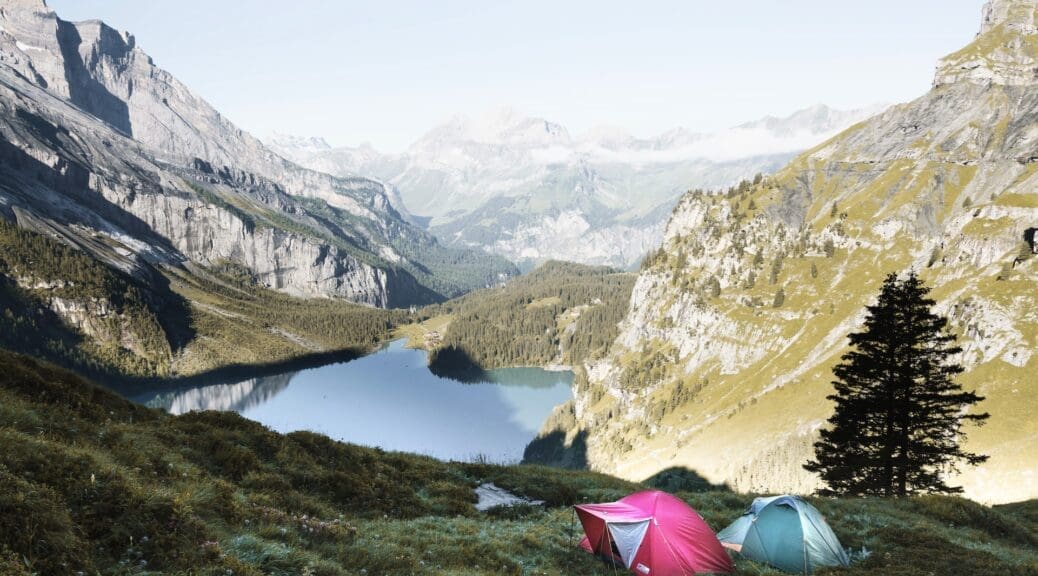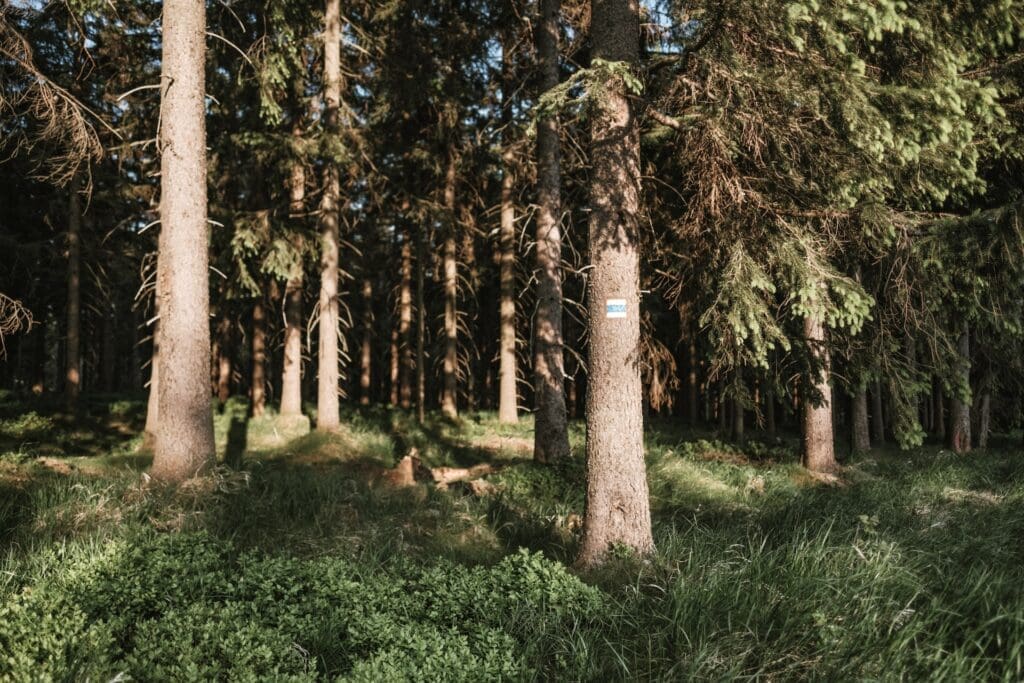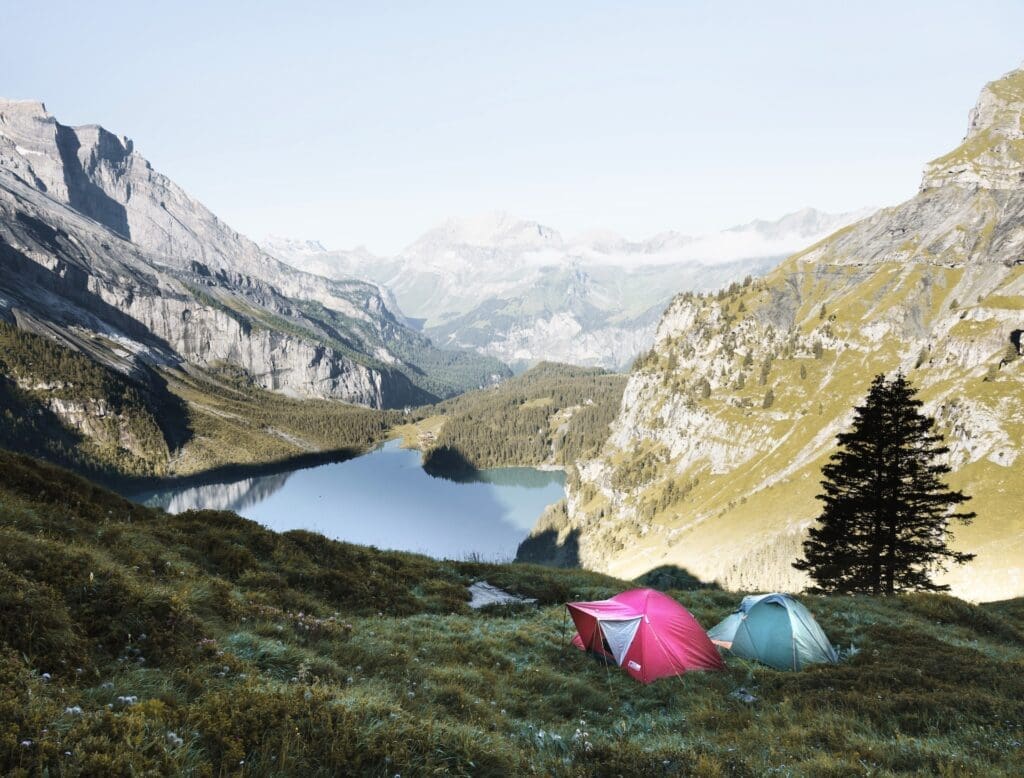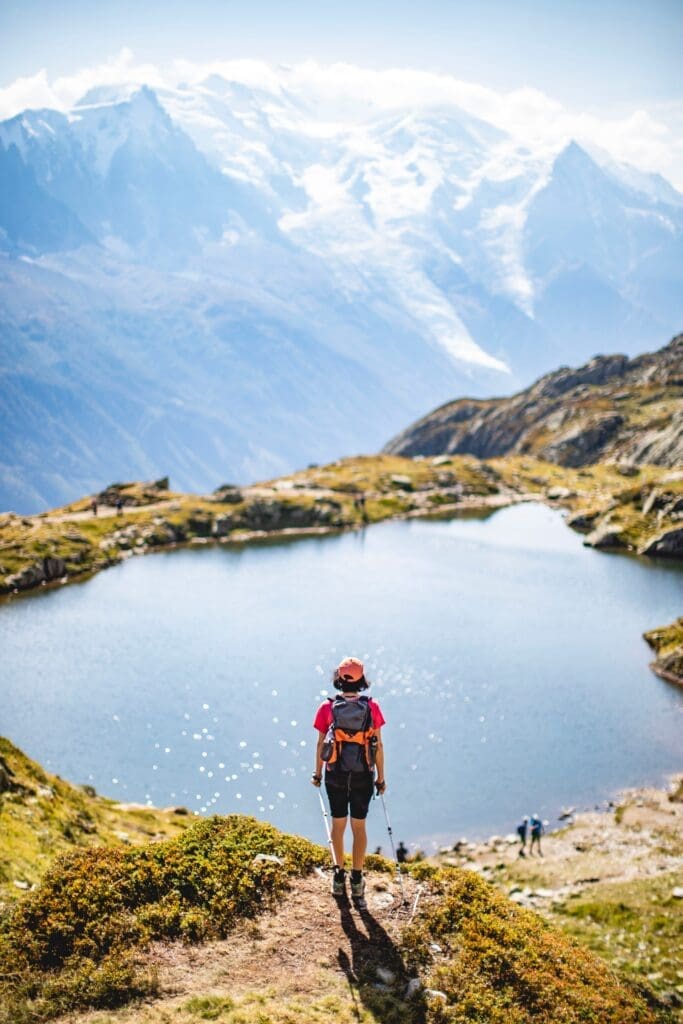
Exploring Alpine Trails: Ultimate Guide to Hiking in the Alps
Picture this: the Alpine Trails, where you’ll find endless peaks, stunning scenery, and epic adventures. If you’re itching for an unforgettable summer adventure, hiking in the Alps is where it’s at. With their jaw-dropping beauty and a variety of trails, it’s a dream come true for any outdoor enthusiasts.
Why Hiking in the Alps is a Must-Do
Hiking in the Alps is a dream for lots of folks, and it’s not hard to see why. Most resorts in the Alps boast snow-capped peaks, lush valleys, and pristine lakes, making them a perfect spot for an adventure on foot.
No matter if you’re a pro or a newbie, there’s a trail for you in the Alps. Everyone can get in on the fun of exploring these incredible mountains.
Choosing the Right Time to Visit
Timing matters when you’re planning your Alps hiking trip. Each season has its own vibe and obstacles, so think about what best suits you and your hiking plans.
In summer, from June to September, the trails are abloom with colourful flowers, the weather’s mild, and the days are longer. But if you’re into winter vibes, December to March is your jam, with snowshoeing and winter hikes on the menu – not to mention world-class skiing!
Whatever season you pick, you can always count on one thing… jaw-dropping beauty.
Understanding the Hiking Season in the Alps
Hiking season in the Alps changes depending on where you are and how high you go. Usually, trails are open from late spring to early fall, offering hikers a chance to soak in the beauty and enjoy good weather. But keep in mind, higher routes might still be snowed in until late June or July. Before you head out, make sure to check trail conditions and weather forecasts so your hike is safe and fun.
Getting Started with Hiking in the Alps
Choosing the Right Time to Visit
When it comes to choosing the perfect time for your hiking adventure in the Alps, it’s essential to consider various factors. The summer months, from June to September, offer the most favourable weather conditions for hiking, with pleasant temperatures and longer daylight hours. Summer allows you to fully immerse yourself in the beauty of the alpine landscapes.
However, if you prefer a quieter and less crowded experience, consider visiting during the shoulder seasons of spring (April to May) or autumn (September to October). These seasons offer their unique charm, with blooming wildflowers in spring and vibrant foliage in autumn.
Selecting the Perfect Hiking Route
With countless hiking routes in the Alps, choosing the right one can be an exciting yet daunting task. Consider your fitness level, hiking experience, and personal preferences when choosing a route. For beginners or those seeking a more leisurely hike, there are plenty of well-marked trails with gentle slopes and stunning scenery.
Experienced hikers looking for a challenge can opt for more demanding routes that tackle rugged terrain and higher elevations. Research different trails, read reviews, and consult guidebooks or local experts to find the perfect hiking route that matches your expectations and abilities.
Understanding Difficulty Levels and Trail Grading
For a safe and enjoyable hike, you need to know about the difficulty levels and grading systems used. Alps’ hiking trails are categorised into levels, from easy all the way up-to difficult. Grading considerations include elevation gain, terrain conditions, and the overall physical demands.
Resorts in the French Alps might differ from those in Italy, so make sure you familiarise yourself with the grading system used in the region you’ll explore, and pick a trail that suits your fitness levels and hiking experience.
Remember, it’s always better to start off easier and gradually challenge yourself as you gain confidence.
Exploring Hiking Options for Beginners
Beginners, don’t be intimidated. There’s plenty of routes suitable for those new to hiking or just looking for a relaxed environment. Keep your eyes peeled for trails labelled as ‘easy’ or ‘family-friendly,’ as these often have gentle inclines, well-maintained paths and countless pit stops to admire the views!
There’s also plenty of chance to join guided hikes or tours specifically designed for newbies. On these tours you can enjoy local knowledge, the opportunity to meet like-minded hikers and of course, valuable guidance. All of which will make your first Alpine hike fuss-free and even more enjoyable.
Planning Your Hiking Trip
Researching and Booking Accommodation
We recommend researching and booking your Alps accommodation well in advance. Whether you prefer the thrill of camping in the Alps, or you’re looking for something more luxurious, there’s plenty lots of variety, including mountain huts, alpine lodges, guesthouses, campgrounds or hotels.
Check the availability and book your accommodations well in advance, especially during peak hiking seasons, to secure the best options and ensure a comfortable stay during your adventure.
Transportation Options: Getting to the Alps
Getting to the Alps is relatively easy, thanks to the region’s well-connected transportation network by air, train, or car. Fly into many major European airports, and take enjoy quick and easy transfers from Geneva Airport, Zurich Airport, or Innsbruck Airport – straight to your destination!
If you prefer a scenic journey, taking the train allows you to enjoy breathtaking views along the way. Research the transportation options that best suit your needs and consider cost, travel time, and convenience when planning your journey.
Exploring Popular Alpine Regions for Hiking
The Alps have tons of gorgeous spots, each with its own vibe and unique hiking adventures. Places like the Dolomites, the Bernese Oberland, the Tyrolean Alps and the Mont Blanc Massif are super popular for hiking.
Do some digging on these areas and their trails to find the one that fits what you’re looking for. Think about stuff like how tough the trails are, what the scenery’s like, how easy it is to get there, and if there are any cool cultural things to check out.
Recommended Hiking Duration and Itineraries
Determining the ideal duration for your hiking trip depends on various factors, including the number of trails you plan to hike, your fitness level, and the time you have available.
Generally, a week-long hiking trip allows for a fulfilling experience, providing ample time to explore multiple trails and soak in the beauty of the surroundings. However, if your schedule is more limited, you can still have a rewarding experience with a shorter duration two-day Alps hike, for example. Research recommended itineraries for your chosen region, ensuring a balance between hiking, rest days, and time to appreciate the local culture and attractions.
Essential Gear and Equipment
Hiking Boots: Finding the Perfect Fit
Having the right hiking boots is crucial for comfort and safety when hiking in the Alps. Look for boots that provide excellent ankle support, a sturdy sole with good traction, and waterproof or water-resistant properties. Reputable outdoor gear stores can properly fit hiking boots, ensuring they are the right size and width for your feet. Break in your boots before your trip by wearing them on shorter hikes to prevent blisters and discomfort during your alpine adventure.
Clothing and Layering Tips for Alpine Hiking
Dressing appropriately for hiking in the Alps involves understanding the importance of layering. Start with a moisture-wicking base layer that keeps you dry by drawing sweat away from your skin. Over the base layer, add an insulating mid-layer to provide warmth, such as a fleece or down jacket. Finally, top it off with a waterproof, breathable outer layer to protect against rain, wind, and snow.
Don’t forget to wear comfortable and quick-drying hiking pants, moisture-wicking socks, and a hat for sun protection. Layering allows you to adjust your clothing according to the changing weather conditions and activity level, ensuring you stay comfortable throughout your hike.
Must-Have Gear for Your Hiking Backpack
Packing the right gear in your hiking backpack is essential for a successful and safe journey in the Alps. Start with the basics, such as a well-fitting backpack, a headlamp or flashlight, a map and compass, and a whistle for emergencies. Carry sufficient water and snacks to stay hydrated and energised during your hikes, and a lightweight and compact first aid kit.
Other essentials include a multitool, a lightweight stove and cooking utensils for longer hikes, sunscreen, insect repellent, and a camera to capture the breathtaking moments along the trail. Remember to pack your gear strategically, distributing weight evenly and keeping frequently needed items easily accessible.
Safety Equipment: Preparing for Emergencies
While hiking in the Alps is generally safe, you should prepare for unexpected situations. Carry essential safety items in your backpack, such as a basic survival kit with items like a space blanket, waterproof matches, and a small knife. Additionally, a personal locator beacon or a satellite communication device can be invaluable in case of emergencies, allowing you to call for help even in remote areas with no cellular reception.
Navigating the Alpine Trails
Understanding Trail Markings and Signposts
Navigating the Alpine trails begins with understanding the trail markings and signposts that guide your way. Throughout the Alps, you’ll encounter a standardised system of trail markings consisting of painted symbols and signs. These markings, such as coloured rectangles or arrows, indicate the direction, difficulty level, and specific routes.
Familiarise yourself with the local trail marking system before setting out to ensure you can confidently follow the designated paths and make the right turns at intersections. Remember to always respect the markings and stay on designated trails to preserve the delicate alpine ecosystem.
Topographical Maps and Navigation Tools
While trail markings provide valuable guidance, having a topographical map and navigation tools adds extra preparedness to your hiking adventure. Invest in a detailed topographical map of the region you plan to explore with landmarks, elevation changes, and points of interest. Study the map before your hike and bring it along as a reference during your journey. Additionally, consider using a compass or a GPS device to assist with navigation, especially when hiking in more remote or challenging areas.
Mobile Apps and GPS for Hiking in the Alps
Harnessing the power of technology, mobile apps and GPS devices are valuable companions for hikers in the Alps. There are many hiking apps that provide detailed trail maps, real-time navigation, and helpful information about points of interest along the way. These apps can be downloaded onto your smartphone, allowing you to access data even in areas with limited or no cellular network coverage. Some apps even offer features like tracking your route, measuring distance, and providing elevation profiles. Consider researching and selecting a reliable hiking app that suits your needs and download the necessary maps in advance to ensure seamless navigation during your alpine adventure.
GPS devices designed specifically for hiking also provide accurate positioning data, elevation information, and detailed route tracking. These devices often come with preloaded maps and offer features such as waypoint marking, geocaching, and trip recording. They are particularly useful in remote areas where mobile network coverage may be scarce.
Remember, while mobile apps and GPS devices can be valuable tools, carry a physical map and have an understanding of traditional navigation methods. Technology can enhance your hiking experience, but it’s crucial to have backup options in case of device malfunctions or battery drain.
Best Hiking Routes in the Alps
The Classic Tour du Mont Blanc
The Tour du Mont Blanc is a legendary hiking route that encircles the magnificent Mont Blanc Massif, taking you through France, Italy, and Switzerland. This iconic trail offers awe-inspiring views of glaciers, alpine meadows, and picturesque mountain villages. Spanning approximately 105 miles, the Tour du Mont Blanc is a challenging yet rewarding journey, allowing you to immerse yourself in the alpine beauty and experience the rich cultural heritage of the region. With cosy refuges and charming mountain villages along the way, this route offers a perfect blend of natural splendour and alpine hospitality.
Exploring the Haute Route
For experienced hikers seeking a true alpine adventure, the Haute Route is an exceptional choice. This legendary high-level traverse connects the famous mountaineering centres of Chamonix, France, and Zermatt, Switzerland. The route winds its way through breathtaking alpine landscapes, crossing high mountain passes, traversing glaciers, and offering mesmerising views of iconic peaks such as the Matterhorn and Mont Blanc. The Haute Route is a demanding multi-day hike that requires good physical fitness, mountaineering skills, and the right equipment. It is an unforgettable experience for those seeking a true taste of the alpine wilderness.
Conquering the Eiger Trail in Switzerland
The Eiger Trail in Switzerland is a thrilling and scenic hiking route that showcases the sheer beauty and drama of the Swiss Alps. This trail takes you along the base of the famous Eiger North Face, offering unrivalled views of the rugged peaks, deep valleys, and the charming town of Grindelwald. The Eiger Trail combines natural wonders with historical significance, as you follow in the footsteps of mountaineering legends who conquered this formidable mountain. With its well-marked path, the Eiger Trail is accessible to hikers of various skill levels, allowing you to soak in the majesty of the Swiss Alps without the need for technical climbing.
Discovering the Dolomites in Italy
The Dolomites, a UNESCO World Heritage site in northeastern Italy, provide a stunning backdrop for captivating hikes. With its towering limestone peaks, dramatic rock formations, and vibrant alpine meadows, the Dolomites offer an enchanting blend of natural beauty and cultural heritage. The Alta Via routes, including the popular Alta Via 1 and Alta Via 2, traverse these majestic mountains, revealing breathtaking vistas at every turn. From challenging high-altitude treks to gentle walks through idyllic valleys, the Dolomites cater to hikers of all levels. Immerse yourself in the rich history, charming alpine huts, and breathtaking panoramas that make the Dolomites a true hiking paradise.
These are just a few examples of the best hiking routes in the Alps, each offering its own unique allure and captivating landscapes. Whether you choose the iconic Tour du Mont Blanc, the challenging Haute Route, the dramatic Eiger Trail, or the enchanting Dolomites, you’re guaranteed an extraordinary hiking experience that will leave you with lifelong memories. In the next section, we’ll explore the joys of hiking in different seasons, comparing the delights of summer hiking with the wonders of winter adventures in the Alps. Get ready to discover the beauty of the alpine trails in all their seasonal glory!
Staying Safe on the Trails
Weather Conditions and Precautions
Weather conditions in the Alps can change rapidly, even during summer. Before heading out on a hike, check the local weather forecast and be prepared for any potential changes. Dress in layers to accommodate temperature changes and carry rain gear in case of surprising showers.
In severe weather such as thunderstorms or heavy fog, postpone your hike or seek shelter until conditions improve. Always prioritise your safety and be aware of the signs of hypothermia or heat-related illnesses. Stay informed, be cautious, and adjust your plans accordingly.
Hiking Etiquette and Responsible Practices
Respecting the environment and other hikers is essential for a pleasant hike. Practise good hiking etiquette by staying on designated paths, following trail markers, and not taking shortcuts that can damage fragile alpine ecosystems. Be considerate of fellow hikers, keeping noise levels low, and avoiding littering. Leave no trace by carrying out all trash and disposing of it properly. Help preserve the beauty of the Alps for future generations to enjoy by being a responsible and conscientious hiker.
Wildlife Encounters: What You Need to Know
The Alps are home to diverse wildlife, including deer, ibex, chamois, and various bird species. Encountering wildlife can be a memorable experience, but be cautious and respect their natural habitats. Keep a safe distance and observe animals from afar, never approaching or feeding them. Be particularly cautious around larger animals, such as bears or mountain goats, and be aware of any potential signs of aggression.
Packing for Your Alpine Hiking Trip
Clothing Essentials for All-Weather Conditions
When preparing for your alpine hiking trip, packing the right clothing is crucial for comfort and safety in varying weather conditions. Opt for moisture-wicking and quick-drying materials that help regulate body temperature and keep you dry. Essential clothing items include a lightweight and breathable base layer, insulating mid-layers such as fleece or down jackets, waterproof and windproof outer layers, hiking pants or shorts, and moisture-wicking socks.
Don’t forget to pack a hat for sun protection and warmth, gloves or mittens, and a buff or scarf to shield your face from wind or cold. Layering your clothing allows for easy adjustment to changing temperatures and weather conditions, ensuring optimal comfort throughout your hike.
Lightweight Camping Gear Recommendations
If you plan to embark on multi-day hikes or stay in mountain huts, pack lightweight camping gear. Invest in a quality lightweight tent, sleeping bag, and sleeping pad that offer a good balance between comfort and weight. Consider the weather conditions and expected temperatures when choosing your sleeping bag, ensuring it provides adequate warmth for cooler nights. Compact camping stoves, cookware, and utensils are essential for preparing meals along the trail. Bear in mind that weight and space are precious commodities, so prioritise lightweight and compact gear to ease the load on your backpack.
Recommended Personal Items and Toiletries
In addition to clothing and camping gear, there are several personal items and toiletries to include in your hiking pack. Carry a well-stocked first aid kit containing essentials like adhesive bandages, pain relievers, blister treatment, and prescription medications.
Don’t forget sunscreen with a high SPF, lip balm with UV protection, and insect repellent to guard against sunburn and bug bites. Include a lightweight microfiber towel, biodegradable soap, and toiletries in travel-sized containers for hygiene purposes. It’s also advisable to bring a small repair kit with essentials like a sewing needle, thread, and duct tape for any unexpected gear repairs.
Hiking with Kids and Pets
Family-Friendly Hiking in the Alps
Hiking in the Alps can be an extraordinary adventure for the whole family. Introducing children to the wonders of nature and the joy of hiking creates lasting memories and fosters a love for the great outdoors. When planning a family hiking trip, consider the abilities and interests of your children. Choose trails that are suitable for their age and fitness level, opting for shorter and less strenuous routes. Look for family-friendly trails that offer interesting features such as waterfalls, viewpoints, or alpine meadows to keep children engaged and motivated. Pack plenty of snacks, water, and sunscreen, and encourage regular breaks to rest and admire the surroundings. Instilling a sense of adventure, curiosity, and respect for nature in your children will make the experience even more rewarding for the entire family.
Tips for Hiking with Dogs in the Alps
For pet owners, hiking in the Alps is an excellent opportunity to bond with your furry friend amidst breathtaking landscapes. However, hiking with dogs requires careful preparation and consideration. Before hitting the trails, ensure that your dog is in good physical health and able to handle the demands of hiking. Check local regulations regarding dogs on trails and any specific leash requirements.
Pack essentials for your dog, including food, collapsible water bowls, waste bags, and a leash or harness. Consider the weather conditions and terrain when selecting the appropriate footwear or paw protection for your dog. Additionally, be mindful of your dog’s behaviour and keep them under control to minimise disturbance to wildlife and other hikers. Respect trail etiquette and clean up after your dog to maintain the pristine beauty of the alpine environment.
With proper planning, hiking with kids and pets in the Alps can be a joyful and rewarding experience.
Ready to embark on your alpine hiking adventure? Start planning today and make unforgettable memories in the majestic Alps. Book your accommodations, research your chosen route, and gather your gear. The Alpine Trails are waiting for you! Happy hiking!




